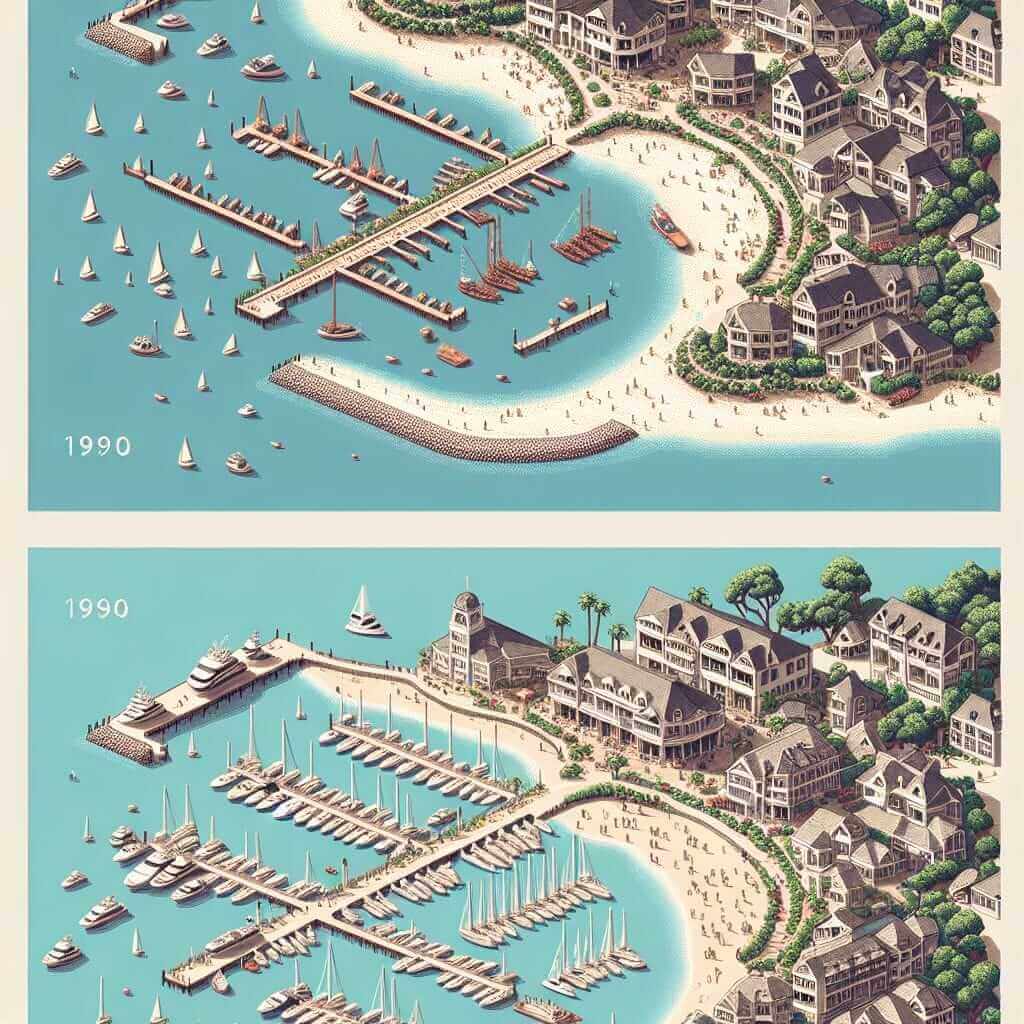As an IELTS instructor with over 20 years of experience, I’ve seen countless students struggle with IELTS Writing Task 1, particularly map descriptions. Many find it challenging to accurately and effectively describe the changes in maps or diagrams while using the appropriate vocabulary and grammar. This guide will provide you with a clear roadmap to crafting a Band 9 map description for IELTS Task 1.
Understanding IELTS Map Descriptions
In the IELTS Academic Writing Task 1, you may be asked to describe a map. This map will usually show changes over time, such as the development of a town, or compare two maps from different periods. Your task is to analyze the visual information and present it in a well-organized, clear, and concise report of at least 150 words.
Key Steps to Writing a Stellar Map Description
To achieve a high score in the IELTS map description task, you need to follow a structured approach:
1. Analyze the Map Carefully
Before you start writing, take a few minutes to thoroughly examine the map.
- Identify the key features: What are the most important elements? Note any landmarks, buildings, roads, rivers, etc.
- Determine the time frame: Is the map showing changes over time? If so, what are the different periods?
- Understand the changes: What are the major differences between the maps? Are there new additions, removals, or alterations?
2. Structure Your Response
A well-structured response is key to a high score. Here’s a suggested structure:
- Introduction (1-2 sentences): Paraphrase the task question and state what the maps illustrate. For example:
- “The maps illustrate the transformation of the town of Cranbrook from 1975 to the present day.”
- Overview (2-3 sentences): Provide a general overview of the main changes. Highlight the most significant transformations without going into detail. For instance:
- “Overall, Cranbrook has experienced significant expansion and modernization, with the most notable changes being the development of a residential area, the construction of a new shopping center, and the rerouting of the main road.”
- Body Paragraphs (2-3 paragraphs): Describe the specific changes in detail. Organize your paragraphs logically, focusing on different areas of the map or types of changes. Use comparative language and specific vocabulary to illustrate the transformations. For example:
- “In 1975, Cranbrook was a much smaller town centered around a crossroads. The area now occupied by housing estates was farmland. However, by the present day, this area has been completely transformed into a large residential zone with numerous detached houses and apartment blocks.”
- Conclusion (Optional 1 sentence): You can write a concluding sentence summarizing the overall changes, but it is not mandatory for Task 1.
3. Use Precise Vocabulary
Vocabulary related to location and change is crucial for a high score:
- Location:
- to the north/south/east/west of
- in the northern/southern/eastern/western part of
- adjacent to
- on the opposite side of
- in close proximity to
- Change:
- transformed into
- converted into
- replaced with
- demolished and replaced by
- extended to
- redeveloped as
4. Master Grammar for Describing Maps
- Passive Voice: Use the passive voice effectively to describe changes where the agent is not important.
- “The forest was cleared to make way for a factory.”
- Prepositions of Place: Use a variety of prepositions to accurately describe the location of features.
- “The park is situated next to the river.”
- Tenses: Choose the appropriate tenses based on the time frame of the map. Use past tenses for past changes and present tenses for current states.
- “The old town center remains largely unchanged.”
- “A new railway line was built connecting the town to the capital.”
Example Map Description
The maps below show the development of a seaside town between 1990 and the present day.

The two maps illustrate the significant changes that have taken place in the seaside town over the past three decades.
In 1990, the town was relatively small and undeveloped. The beachfront was dominated by a fishing harbor, with a small village clustered around it. There was a single road leading into the village and a small number of scattered houses.
However, the town has undergone a dramatic transformation by the present day. The fishing harbor has been replaced by a large marina, catering to tourists. The village has expanded significantly and is now a bustling town center with a variety of shops, restaurants, and hotels. A new coastal road has been built, connecting the town to neighboring areas, and a large residential area has sprung up on the outskirts.
One of the most notable changes is the development of the beachfront. The sandy beach, which was largely empty in 1990, has been developed into a popular tourist destination. There are now numerous hotels and resorts lining the coast, along with a promenade and various recreational facilities.
Tips for Success
- Practice makes perfect: Familiarize yourself with different types of maps and practice writing descriptions regularly.
- Focus on clarity and conciseness: Avoid unnecessary details or repetition. Get straight to the point and present the information clearly.
- Proofread carefully: Always leave time to proofread your work for grammatical errors and spelling mistakes.
- Get feedback: Ask a teacher or tutor to review your writing and provide feedback on areas for improvement.
By following these tips and strategies, you will be well on your way to mastering the art of writing IELTS map descriptions and achieving a Band 9 on your exam!